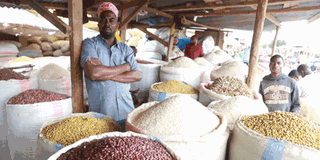Inflation rate falls to 35-month record low

What you need to know:
- If nothing else, this is a good indication that the rate of increase in the prices of goods and services was lower in the year that ended on December 31, 2017 than was the case in the year to November 20, 2017.
Dar es Salaam. Tanzania’s annual headline inflation rate fell to four per cent in December last year, down from the rate of 4.4 per cent recorded in November the same year. This is the lowest rate in the last 35 months, the National Bureau of Statistics (NBS) has said.
If nothing else, this is a good indication that the rate of increase in the prices of goods and services was lower in the year that ended on December 31, 2017 than was the case in the year to November 20, 2017.
The NBS director of Population Census and Social Statistics, Mr Ephraim Kwesigabo, said yesterday that the fall in inflation was due to a palpable decline in the prices of food and non-alcoholic beverages.
The inflation rates for food and non-alcoholic beverages last December fell to 6.2 per cent, down from 7.4 per cent last November.
“The annual inflation rate for food consumed at home and away from home also decreased to 6.7 per cent in December, falling from 7.9 per cent as recorded in November,” Mr Kwesigabo said.
In addition to that, the report shows that the 12 months index change for non-food products slightly decreased to 2.8 per cent in December 2017, down from 2.9 per cent in November the same year.
According to the Statistics Bureau, the inflation rate that excludes food and energy for last December decreased to 1.3 per cent, falling from 1.4 per cent in November.
The food items which contributed to the decrease in prices were beef, which fell by 3.4 per cent; fresh fish (down by 15.1 per cent); vegetables (2.9 per cent); Irish potatoes (6.7 per cent); cassava flour (1.9 per cent); raw cassava (16.8 per cent); groundnuts (3.5 per cent), and sweet potatoes, whose inflation fell by 12.6 per cent.
On the other hand, Mr Kwesigabo stated that the overall consumer price index (CPI) increased to 109.21 in December last year, compared to 108.94 in the previous month.
The report also has it that the annual average headline inflation rate for the period January to December 2017 was higher – at 5.3 per cent – compared with the 5.2 per cent recorded during the same period in 2016.
The increase was mostly attributed to an upsurge in the prices of both food and non-food items.
The annual average inflation rate for food items increased to 9.6 per cent in 2017, up from 7.6 per cent in 2016.
Mr Kwesigabo added that the non-food inflation rate rose to 3.2 per cent from the 3.1 per cent that was recorded in the previous year.




